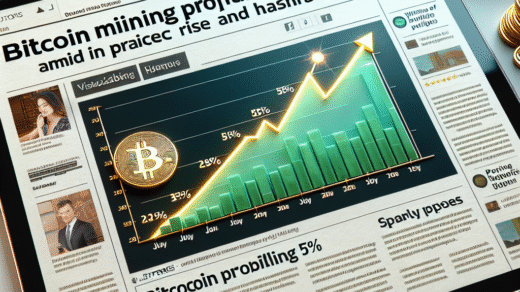Good Morning, Asia! Welcome to your morning briefing that highlights the pivotal economic narratives shaping the markets during U.S. hours. This analysis will provide insights into the ongoing trends in cryptocurrency and trade, particularly focusing on the role of stablecoins, such as USDT, in maintaining the dollar’s supremacy.
The Dynamics of Dollar Dominance
In a world where China pushes for de-dollarization, the reality on the ground tells a different story. Recent events in Bolivia showcase this paradox vividly. A billboard promoting the BYD Dolphin Mini—a Chinese electric vehicle—illustrates the irony: while China strives for economic independence from the U.S., transactions for these vehicles are conducted in USDT, a stablecoin backed by U.S. Treasury assets. This scenario highlights the complex relationship between emerging markets and the U.S. dollar.
China’s Push for De-dollarization
China has been vocal about its efforts to reduce reliance on the U.S. dollar, especially in Latin America, framing this initiative as a commitment to South–South cooperation. Bolivia, for instance, now conducts about 10% of its trade in yuan, while Brazil has recently established a RMB 190 billion ($26 billion) swap line. Argentina, too, has sought renminbi liquidity to avert a default. Yet, despite these efforts, retail consumers in these markets still gravitate towards USDT due to its speed, stability, and liquidity.
The Yuan vs. USDT: A Comparative Analysis
Despite China’s export prowess in sectors like soy, lithium, and electric vehicles, the yuan faces significant challenges in gaining traction as a transactional currency in international markets. The People’s Bank of China’s policies restrict the yuan’s use offshore, making it less appealing for merchants and consumers in inflation-stricken or capital-controlled economies. USDT, on the other hand, thrives in these environments, providing a reliable alternative for cross-border transactions.
Stablecoins: The Game Changer in Emerging Markets
As the landscape evolves, stablecoins are emerging as the preferred medium for transactions in various regions, contrary to China’s intentions for a yuan-centered economic framework. This grassroots phenomenon of “re-dollarization” showcases the increasing acceptance of crypto-dollar rails, which are becoming indispensable in emerging markets. The advantages offered by stablecoins, including speed and global trust, far exceed what Central Bank Digital Currencies (CBDCs) or yuan swap lines can provide.
The Future of De-dollarization in Latin America
While discussions around de-dollarization continue, the reality is that the digital dollar remains the dominant force in trade. The rise of USDT in Latin America signifies a shift away from China’s vision of economic independence towards a new form of dollar dominance. This digital transformation raises critical questions about the future of global trade and monetary influence, particularly for China. As stablecoins gain traction, their role in international finance will only expand.
Market Movements: Bitcoin, Ethereum, and Gold
In recent market updates, Bitcoin (BTC) has been trading above $114.5K, showing a relatively flat price trend with slight resistance around the $115,000-$117,000 mark. Institutional interest and expectations for rate cuts in the U.S. are driving market sentiment. Ethereum (ETH) is trading at $4,400, facing challenges as it attempts to reclaim previous highs amidst weak momentum.
Gold is also making headlines, trading near record highs due to the weakening U.S. dollar, inflation concerns, and high central bank demand. The Nikkei 225 has seen a rise of 1.28% as investors reflect on Wall Street’s gains and China’s steady loan prime rates.
What’s Next for Cryptocurrency?
In the broader cryptocurrency landscape, platforms like prediction markets and decentralized autonomous organizations (DAOs) are gaining attention. Experts, including Ethereum co-founder Vitalik Buterin, emphasize the potential of low-risk DeFi (Decentralized Finance) initiatives over speculative memecoins in sustaining Ethereum’s economy. Furthermore, the recent easing of ETF listings has opened new avenues for cryptocurrency investments, indicating a shift towards a more regulated and stable market environment.
Conclusion: The Resilience of the Dollar and the Rise of Stablecoins
As we navigate through these complex economic narratives, it is clear that the U.S. dollar remains resilient despite the rising tide of cryptocurrency and stablecoins. While China’s ambitions for de-dollarization continue, the preference for USDT in emerging markets underscores the complexities of global finance. The future will be shaped not just by the currencies we use but by the technologies that facilitate trade and economic exchange.
Meta Description: Discover how stablecoins like USDT maintain the dollar’s dominance in emerging markets. Explore the dynamics of de-dollarization, market movements, and the future of cryptocurrency in this in-depth analysis.







